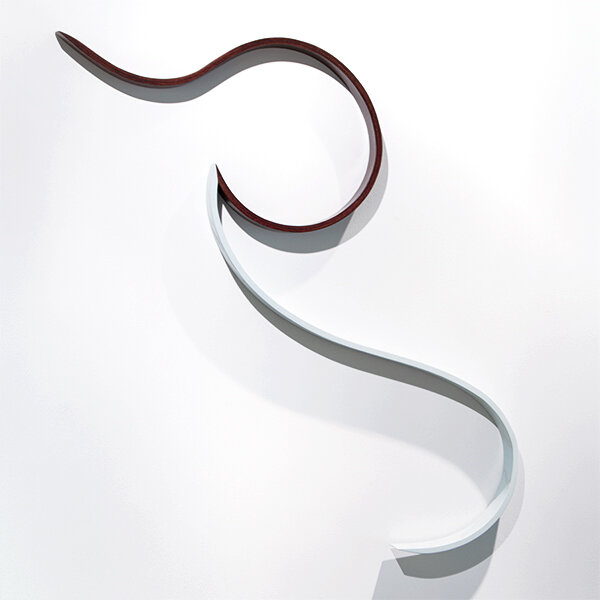Open Lines: New Sculptures by Harold Linton
/Open Lines: New Sculptures by Harold Linton
Gillespie Gallery
June 22 - July 27, 2019
Opening Reception: Saturday, June 22, 4 - 6:30pm
Harold Linton believes that through our perception of nature’s rich variations of material form and expression, we are able to cultivate a deeply moving appreciation of human experience in its most natural state of growth and decay. Open Lines includes constructions of curvilinear forms that reflect in abstract terms the nature of physical movement, organic form, and human spatial gesture. Refined in their brevity of form, yet energetic in their material and spatial formations, Linton’s arcs of formal simplicity have an undulant quality and constructive presence based on nature’s sources of inspiration. Having completed innumerable drawings and graphic explorations of line, plane, form, and the interplay of light and shadow, Linton bends and laminates various hardwoods in order to inspire viewers’ imaginations and elicit personal interpretations for each work.
What appears to be a very simple act of composing two arcs or two lines in space into a pleasing composition is far more challenging than it appears. The poetic dialogue between two arcs in motion forms is a kind of dance frozen in time and space. Capturing the exact moment of mutual respect for each individual element reveals a profound moment of integration and coupling. “Bird in Space”,1928, as a series of sculptures by Romanian sculptor Constantin Brâncuși, serves as an excellent historical example of constructivist sculpture possessing the reductive thinking evident in the later “Minimalism” art movement of the 1960s and 1970s. Similar to the spatial nuances of human gesture and movement in dance, the following ‘rotoscope of ballet’ expresses this quality of graphics search for graceful pathways of responsive movements with graphic analysis of delicate geometries and fluid performances of dance. Accompanying the exhibition is a dance video that employs rotoscoping to digitally track a dancer’s movements. This reveals the aesthetic pathways of responsive movement and graphic analysis of delicate geometry through the fluid performance of dance.
The artistic process of making the arcs look like they are dancing is complex and challenging, yet the poetry and tension within the arcs in motion speaks volumes of the dance they create. Linton is going for an expressive product that gains inspiration from his architectural background and study of the works of Romanian sculptor, Constantin Brancusi, as well as from Russian Constructivist, Kazimir Malevich, and the Minimalist sculptor, Donald Judd.



